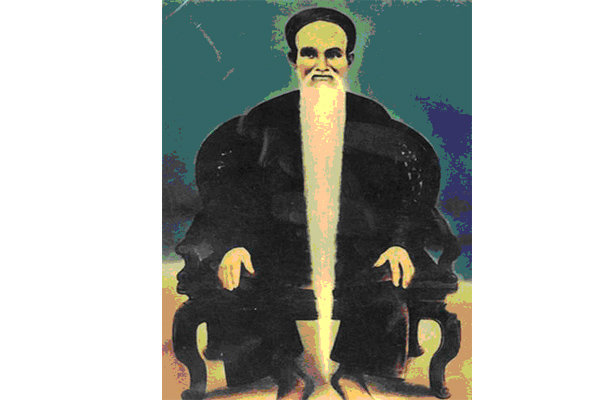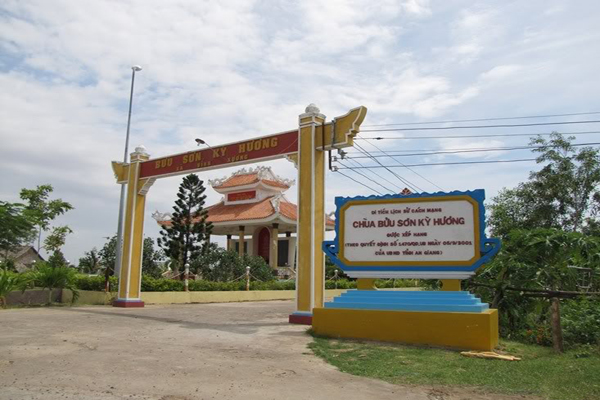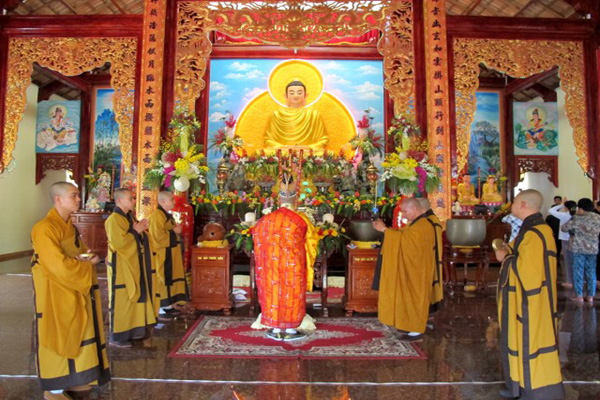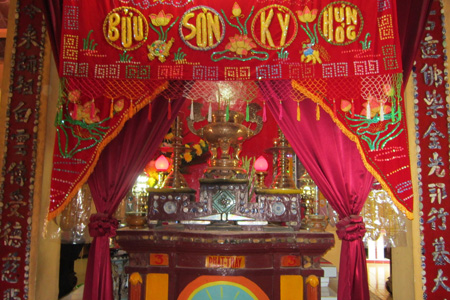Buu Son Ky Huong (Strange Fragrance from the Precious Mountain) was founded by Doan Minh Huyen in Long Kien Commune, Cho Moi District, An Giang Province in late 1849. Doan Minh Huyen (1807-1856) was from…
Buu Son Ky Huong (Strange Fragrance from the Precious Mountain) was founded by Doan Minh Huyen in Long Kien Commune, Cho Moi District, An Giang Province in late 1849. Doan Minh Huyen (1807-1856) was from Tong Son Village, Sa Dec Province (present-day Dong Thap Province). He practised Buddhism, propagated his belief, cured sick people and organized people to reclaim land and build hamlets and pagodas. Therefore, he quickly won the hearts of thousands of followers.
Because Buu Son Ky Huong attracted a great number of followers, French colonialists were afraid that he would set up a secret society to rebel. Therefore, they forced him to practice at Tay An Pagoda (Sam Mountain, Chau Doc), which belonged to Thien Tong Lam Te'(or Rinzai Zen Sect) in order to keep a close watch on and control him more easily. There he kept organizing his disciples to reclaim land, build camps on the paddy fields and build new pagodas. The local people called him by a respected name-Tay An Buddhist Teacher, and his sect was called Buu Son Ky Huong-a branch of Thien Tong Lam Te in South Vietnam.
During his practice, Doan Minh Huyen gathered many disciples, who were patriotic and faithful to the sect. After his death (1886), his disciples carried on the missionary work. For example, Dao Ngoan propagated the faith in Sa Dec and Vinh Long, and Dao Xuyen spread the faith in the eastern provinces.
Since Buu Son Ky Huong has no dignitaries and churches, the tenets of Tay An Buddhist Teacher were transmitted from one generation of reliable disciples to another. Therefore, there was internal division into smaller sects. Two of those sects were set up on the basis of Buu Son Ky Huong: Tu An Hieu Nghia and Hoa Hao Buddhism. Tu An Hieu Nghia was founded by Ngo Loi at Tuong Mountain (An Giang Province) in 1867; Hoa Hao Buddhism was founded by Huynh Phu So in Hoa Hao Village, An Giang Province, in 1939.
The tenets of Buu Son Ky Huong are based on Hoc Phat – Tu nhan (Following Buddha, Cultivating Humanity) and the Four Great Debts of Gratitude.
Following Buddha in Buu Son Ky Huong means to follow the example of Buddha and frequently chant “Glory to Buddha Amitabha.” During the process of preaching, however, Doan Minh Huyen did not regard following Buddha as the core but the orientation for followers to cultivate humanity.
Buu Son Ky Huong considers “cultivating humanity” as the supreme guideline for followers since it helps them get rid of evils, inclines them to the good, and encourages them to improve themselves and practice charity so that they can attend the Dragon Flower Festival later. It also helps followers lead humane lives, become useful for their families and society, and cultivate the five moral standards in Confucianism (benevolence, righteousness, civility, intelligence and faithfulness).\

Doan Minh Huyen recommended followers to pay the Four Great Debts of Gratitude (gratitude to parents, gratitude to the motherland, gratitude to the Three Refuges, and gratitude to fellow-citizens and mankind). He considered this the first step on the ladder toward a pious life. Accordingly, the Four Great Debts of Gratitude control the mind and action of all followers.
After the establishment of Buu Son Ky Huong, Doan Minh Huyen introduced the Five Great Precepts (Ngu dai gioi cam), which are based on the Five Precepts (Ngu gioi). They include the five commandments as follows: no killing or harming other people and animals; no robbing others or enjoying others’ belongings; no adultery or debauchery; no alcoholism, taking drugs, gambling, prostitution, superstition, witchcraft or divination; and no lying, sneering or sowing division. Followers of Buu Son Ky Huong are not required to leave home for religious practice, or have their hair and beards cut. They are allowed to get married and have to earn their living themselves.
There are neither images nor statutes of Buddha in the pagodas of Buu Son Ky Huong originally built by Doan Minh Huyen. Instead, a piece of red cloth called tran dieu, which is hung on the central wall of the sanctum, is worshipped there. On the altar are flowers, water, incense and lamps. There are neither bells nor tocsins in these pagodas. In the belief of Buu Son Ky Huong, tran dieu symbolizes mercy, humanity, solidarity, patriotism and love for mankind.

Followers of Buu Son Ky Huong also have altars set up in their houses with similar but simpler arrangements. The ancestral altar is set up in the center of the house. Above it is another altar to tran dieu. An altar to Heaven and Earth is set up outside the house. Followers pray twice a day (in the early morning and late afternoon) first to ancestors, then to the Three Refuges, and finally to Heaven and Earth.
The annual important anniversaries and festivals of Buu Son Ky Huong are held according to the lunar calendar, such as the Thuong Nguon Festival (January 15), the Anniversary of Buddha’s Birthday (April 15), the Doan Ngo Festival (May 5), the Vu Lan Festival (July 15), the Ha Nguon Festival (October 15) and the Anniversary of Tay An Buddhist Teacher’s Death- Day (August 12).
As there are no dignitaries or monks, Buu Son Ky Huong is organized into pagodas. Each pagoda is an independent organization and a place for the anchorites and followers in each locality to conduct religious activities. It also functions as the operator, organizer and manager of all rituals and religious activities in both internal and external scopes.

Each pagoda has a management board that includes a head, vice heads, a secretary, a treasurer and members. This management board is arranged and organized by the pagoda itself, depending on its customs and need. All the members of this board should be advanced in years, have a wide knowledge of laws and tenets, have the conditions to devote themselves to religious affairs, and have prestige among the community to give instructions and preach to the followers. Therefore, the religious unity of Buu Son Ky Huong is maintained mainly with the faith of followers, and the religious relations are mainly maintained through the virtue of deacons.
People who want to follow Buu Son Ky Huong must have faith. Moreover, they have to regularly think of practicing its laws and tenets, which are summarized in Hoc Phat – Tu nhan. When accepted, they receive a piece of yellow paper containing four red words “Buu Son Ky Huong.” Long Phai, the paper, is considered a certificate of faith. It is also a talisman that followers always carry with them. It is buried with them when they die.
For the lack of a leading organization, each pagoda of Buu Son Ky Huong has been licensed for operation by local governments since 2005 (after the promulgation of the Ordinance on Religion and Belief). In 2008, Buu Son Ky Huong had more than 15,000 followers and 18 pagodas located in seven provinces (An Giang, Dong Thap, Ba Ria-Vung Tau, Long An, Soc Trang, Vinh Long and Tien Giang).

